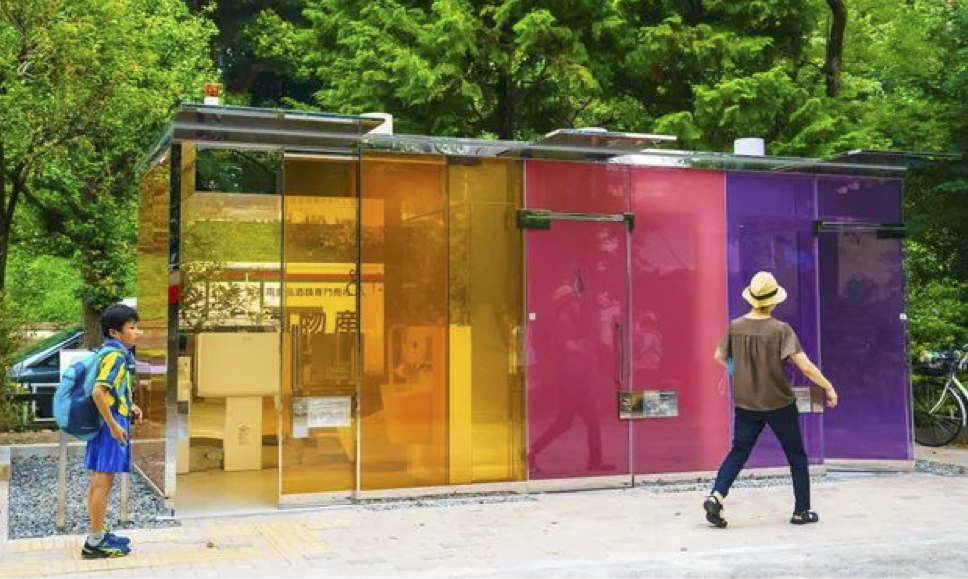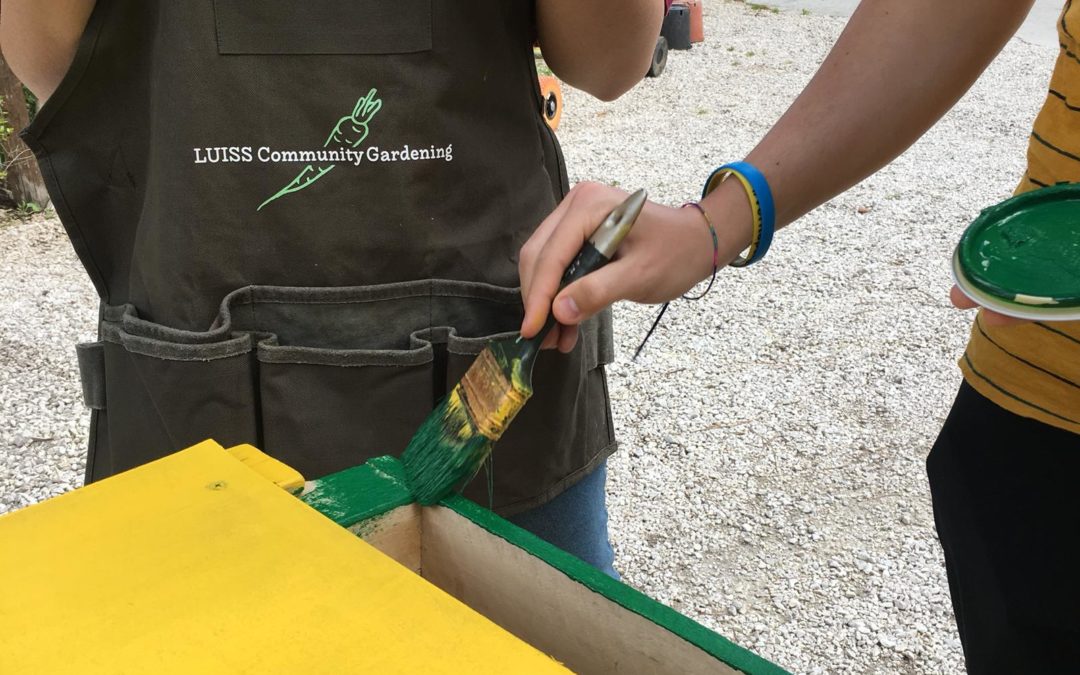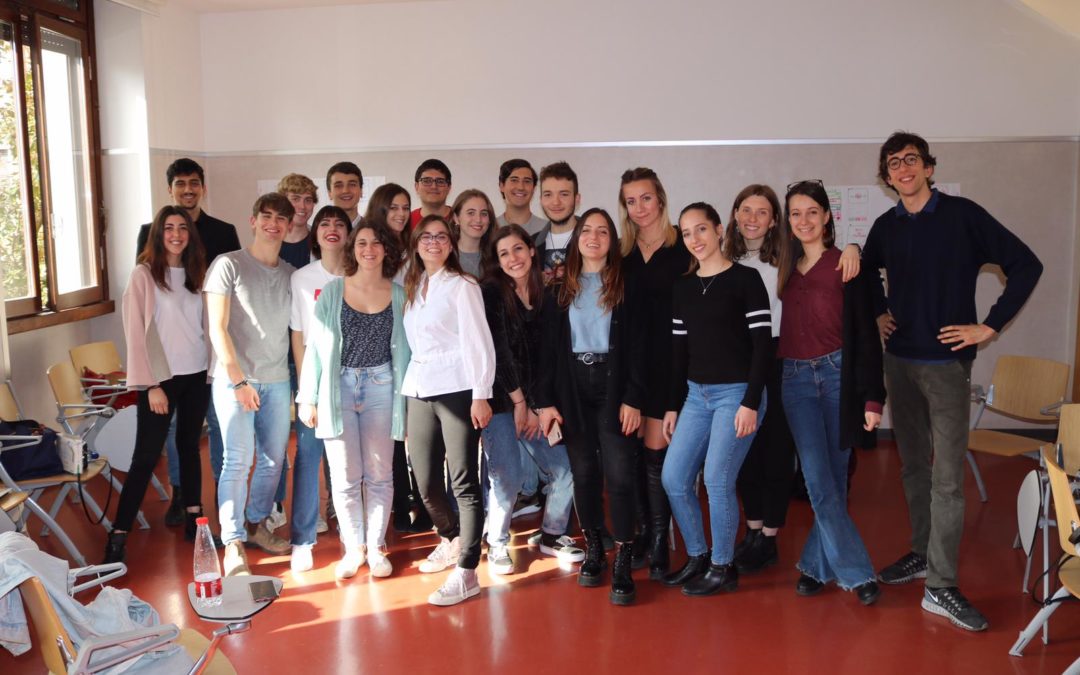
What can toilets teach us about accessibility?
You may have seen the famous see-through public toilets in Japan. The stalls made of transparent coloured glass show the inside of a bathroom and turn opaque when locked. Challenging the privacy of what a toilet represents, these toilets aim to be inviting by showing people how clean the toilets are. But why would designers put so much effort into designing a toilet? Why should we care?
Credits to the photographer Masatoshi Okauchi/REX/Shutterstock
When we think of inclusive public space, a toilet is probably not the first thing that comes to mind. We tend to avoid public restrooms until we need one, but they can tell us a lot about accessibility. Toilets are as crucial as wide sidewalks, ramps or seating because being able to use a bathroom translates into the ability to use a fundamental piece of infrastructure for community building, leisure and amenity in cities.
When did we start thinking of public toilets?
Necessary hygienic regulations which are now an essential part of our everyday life were not always like this, before the widespread use of indoor plumbing and city hygiene before 1750 public toilets didn’t exist. It was until modernity, cities, and when public life became relevant that local planners enforced hygienic measures and architects decided to consider toilets in building design. European cities started discussing public hygiene as a result of diseases such as the plague, cholera, or typhoid; these transmitted faster in densely populated areas like industrial cities. It was until the relegation of women to the household, and men’s ability to move between the public and the private sphere that society segregated toilets. Social segregation also influenced the hygienic division by class, gender and ethnicity marking degrees of exclusivity, not only between men and women but also, between rich and poor, and black and white. The so-called ‘racial hygiene’ was a racist approach to hygiene where people couldn’t use the same toilets. For instance, black people had to use bathrooms located outside of buildings.
Pissoir on a wall in the city of Berlin.
Toilet infrastructure stands out as spaces where the public meets the private sphere and therefore unveils a broad spectrum of needs which designers should consider. The most evident are gender needs.
Standing infrastructure, for instance, might be cheaper but it only considers males. Women who might need a clean seat or shelter find it more challenging to find a toilet on the street that can fulfill their needs.
The transgender and non-binary population also suffer from sex segregation. The architect Joel Sanders identified the lack of attention that other architects, designers and planners gave to the subjective experience of a gay man in public toilets, and therefore the experience of many others in the LGBTQ community who often don’t feel safe in the bathroom they are assigned.
But gender is not the only limitation in the provision of public toilets. Older people need to use a bathroom more often than their younger peers, to the extent that they could plan their routes around toilet accessibility. Besides the infrastructure older adults’ needs are more complex; they might need toilet handles, some might ride a wheelchair and need more spacious stalls too.
Toilet infrastructure shouldn’t be a luxury, since it covers one of the most basic needs, especially for the less abled bodies. Disabilities translate into a list of gadgets that fully-abled users might not even think about like adult-size changing boards, accessible seats, wide stalls, no stairs, and even running water. This lack of infrastructure silently pushes some social groups out of the public space by limiting its accessibility. The topic is not as widely discussed because of the level of privacy and individual experience it involves.
Toilet provision around the world
Sanitation is one of the biggest challenges in developing countries. In some places, the provision of public toilets doesn’t come from the local authorities, but users rely on commerce, bars, restaurants, gas stations or public buildings to use a bathroom. This private toilet provision not only cannot guarantee appropriate infrastructure but also relies on the will of private parties to grant access making them potentially inaccessible.
Australian cities like Brisbane, for example, have proven exceptional standards for public toilet provision. They mapped the existing toilets, added changing tables and broadened the space.
In contrast, cities in developing countries like Mexico City don’t have public toilet infrastructure provided by the local government at all. Sanitation becomes a challenge in this city because public urination is considered a felony but local authorities don’t offer public restrooms.
Who is talking about toilets nowadays?
There are pressing conversations around public toilets, and there are several proposals concerning their desirable features. Proposals aim to achieve toilets which are:
- Sustainable
- Flexible: toilets that are easy to move
- Inclusive
- Beautiful designs
- Safe spaces
Stalled! is an initiative which “takes as its point of departure national debates surrounding transgender access to public restrooms to address an urgent social justice issue: the need to create safe, sustainable and inclusive public restrooms for everyone regardless of age, gender, race, religion and disability”. Their approach is to design guidelines and prototypes on how toilets can be more inclusive, this together with lectures and workshops, writings and interviews.
Nette toilette: German cities launched the “Nette toilette” (nice toilet). In this project, retailers and restaurateurs provide a bathroom for public use free of charge, for which they receive an expense allowance from the city. This way, local governments use already existing infrastructure and guarantee public toilet provision. Restaurants and shops can join the program, and the local authorities evaluate the accessibility and conditions of the provided toilets.
WeCo: The city of Saint-Étienne, France, offers the first flushing toilets which are both ecological and architect-designed, promoting the environmental transition of public sanitation. Wesco’s “flush toilets recycle the wastewater which is transformed into clean water and fertilizer or fuel thanks to energy-saving technology”. Beyond the sustainable approach, WeCo provides urban shelters with comfortable and spacious cabins. Their optimized dimensions and the absence of connection to the water network facilitate their repeated removal and assembly, making them easy to move from one place to another.
Cities should not only ensure public toilet provision but also think of its design and scope for the use and enjoyment of public space. Denying someone access to a bathroom is denying access to cities.
References:
George, R. (2020). Tokyo’s public toilets may be transparent – but at least they’re building some. Retrieved 16 October 2020, from https://www.theguardian.com/artanddesign/2020/aug/18/tokyo-toilets-may-be-transparent-but-at-least-theyre-building-some
Madanipour, A. (2003). Public and private spaces of the city. London: Routledge.
Where Do We Go From Here? – 99% Invisible. (2020). Retrieved 18 October 2020, from https://99percentinvisible.org/episode/where-do-we-go-from-here/
Further reading:
https://www.die-nette-toilette.de/ https://www.en.weco-toilet.com/
https://www.die-nette-toilette.de/






